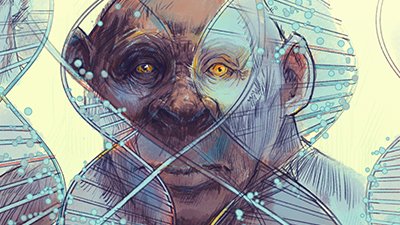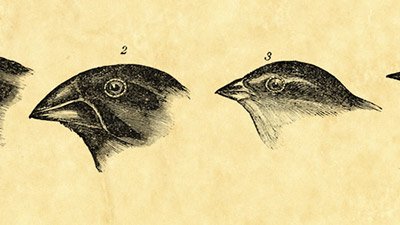
Evolutionary Faith
Theoretical biophysicists have built a mathematical model showing how “protocells” could have originated from simple chemical interactions. Does the model teach us more about evolution’s plausibility or evolutionists’ faith?
News Source
- ScienceNOW: “Can a Simple Model Explain the Advent of Cells?”
How did nonliving matter turn into self-reproducing organisms? The answer to that question underpins the entire theory of evolution—and therefore the sole atheistic explanation of how life came to be on earth—given that Darwinian evolution cannot work until self-reproducing entities exist.
Despite the foundational importance of that question to the Darwinian project, questions abound while answers are few. ScienceNOW reporter Tim Wogan explains that “Under the right conditions, some proteins and other complex molecules can produce copies of themselves by purely chemical means . . . [but] decades of experiments and theoretical models show that in a simple chemical solution, these bad mutations would accumulate over time and inevitably snuff out reproduction.”
So decades of experiments and models offer no solution to the foundational question of Darwinism—but billions don’t doubt evolution? Wogan articulates the odd non sequitur of a justification: “Of course, nature found a way around this problem”—assuming that our existence proves life did, in fact, build itself from scratch.
Wogan is reporting on recent work by University of Tokyo biophysicists Atsushi Kamimura and Kunihiko Kaneko, who have introduced a new model of how protocells could begin to reproduce without becoming quickly overcome by mutant components. The duo report in Physical Review Letters on computer simulations showing how protocells could drift apart, thereby preventing the aforementioned “snuffing out” of the reproductive process.
It’s a long chain of purported events from basic elements and molecules to the simplest organic molecules to more complex organic compounds to something resembling RNA or DNA—and then to RNA or DNA surrounded by a cell and containing meaningful information that allows the cell to reproduce itself accurately.
Is the faith of evolutionists justified? Wogan concludes, “In fact, in Kamimura and Kaneko’s model, the two molecules are assumed to be nothing more than spheres that somehow catalyze each other's reproduction. That’s a long way from DNA and RNA.” Indeed, it’s a long chain of purported events from basic elements and molecules to the simplest organic molecules to more complex organic compounds to something resembling RNA or DNA—and then to RNA or DNA surrounded by a cell and containing meaningful information that allows the cell to reproduce itself accurately. Until such explanations exist (and we believe they never will), the intensity of acceptance of evolution—rather than truly scientific skepticism—betrays the faith of evolutionists.
Further Reading
For More Information: Get Answers
Remember, if you see a news story that might merit some attention, let us know about it! (Note: if the story originates from the Associated Press, FOX News, MSNBC, the New York Times, or another major national media outlet, we will most likely have already heard about it.) And thanks to all of our readers who have submitted great news tips to us. If you didn’t catch all the latest News to Know, why not take a look to see what you’ve missed?
(Please note that links will take you directly to the source. Answers in Genesis is not responsible for content on the websites to which we refer. For more information, please see our Privacy Policy.)
Recommended Resources

Answers in Genesis is an apologetics ministry, dedicated to helping Christians defend their faith and proclaim the good news of Jesus Christ.
- Customer Service 800.778.3390
- Available Monday–Friday | 9 AM–5 PM ET
- © 2025 Answers in Genesis





